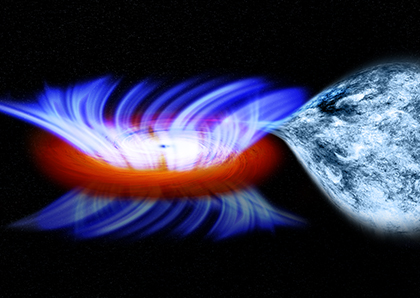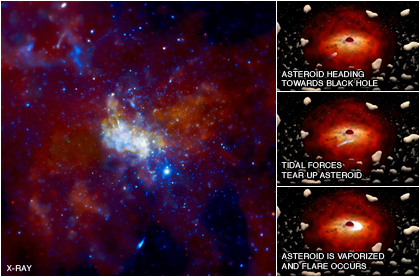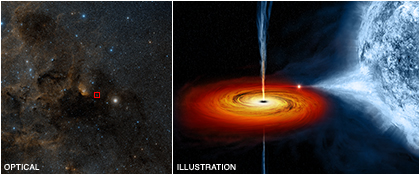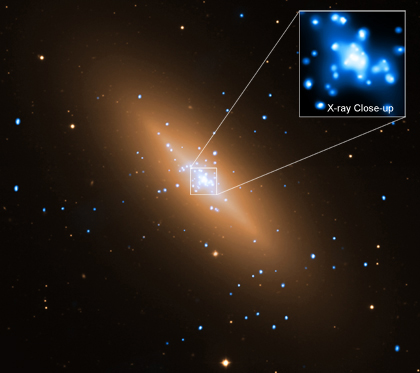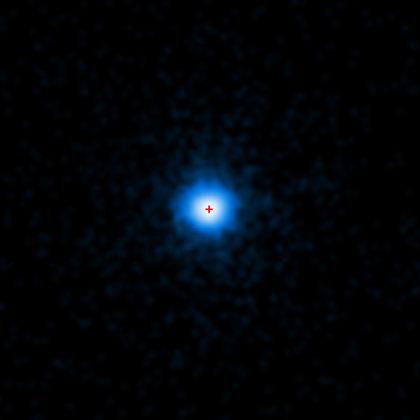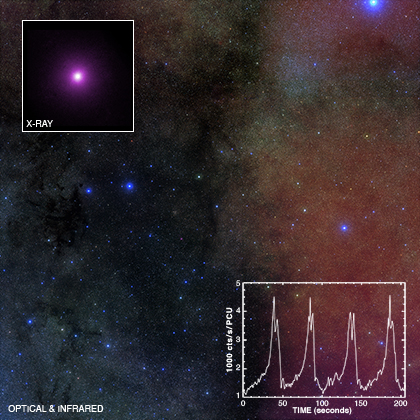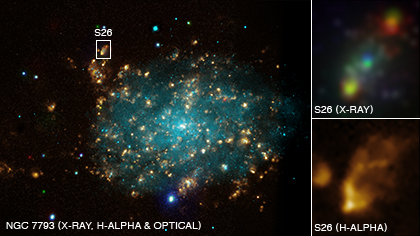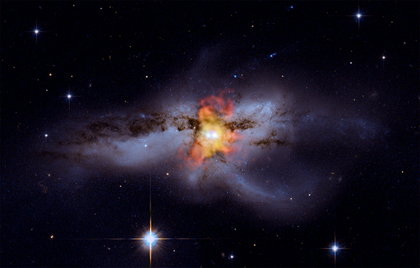NASA'S Chandra Finds Fastest Wind From Stellar-Mass Black Hole
Submitted by chandra on Tue, 2012-02-21 13:24This artist's impression shows a binary system containing a stellar-mass black hole called IGR J17091-3624, or IGR J17091 for short. The strong gravity of the black hole, on the left, is pulling gas away from a companion star on the right. This gas forms a disk of hot gas around the black hole, and the wind is driven off this disk.

